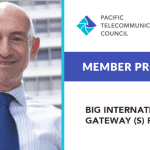
Director of Marketing Strategy and Sales Enablement, ZenFi Networks
With the advent of 5G and all the use cases it will bring, it is expected that more than 75 billion devices will be connected worldwide by 2025. With this anticipated growth, network demands are increasing exponentially and the concept of a true ecosystem has never been more critical. Automation and end-user appetite for technology are driving the need for faster networks with greater capacity and better performance, but the disparity between the demand for wireless network capacity and the amount of bandwidth available is a growing challenge. Wireless densification – adding cell sites to increase available capacity – is a key enabler for creating networks that can support the technologies of the near and far future. But it is just one piece of the ecosystem puzzle.
When we examine what challenges we need to overcome in order to deliver network solutions and meet the rise of consumer and business needs, we realize that legacy fiber architectures simply aren’t designed to address the current challenges that networks now face. Legacy network infrastructure cannot meet the demands of densification that are being driven by new wireless applications, because they were built without accessibility in mind. Traditional fiber networks were built to solve an old challenge, interconnecting disparate end points with high capacity backhaul. This approach to infrastructure design and deployment worked at one time, when traditional network topologies focused on a limited number of macro base stations deployed within a given geography, but the approach will not work today to support the hundreds of thousands of small cell sites needed to densify and augment wireless networks. Fiber providers must reinvent the way they design, deploy, and manage network infrastructure to enable wireless densification and ultimately, end users.
5G, IoT, smart city applications, content, and other business and consumer applications need robust networks that will allow data to be far more accessible and widespread while still ensuring high capacity availability. Network densification holds the key to unlocking this critical component of the overall 5G ecosystem. By architecting networks with capacity AND accessibility in mind, fiber providers can enable a better user experience by bringing services closer to the user and connecting fiber to a larger number of small cell sites. In short, whether it’s through dark and lit fiber strategies and/or the implementation of C-RAN applications, fiber providers need a clear and attainable game plan for ramping up their underlying infrastructure to enable all of the new use cases that 5G will bring.
The Path to Bridging the Digital Divide: Considerations for the Ecosystem of the Future
Of course, getting the best of both capacity and accessibility isn’t easy, especially in urban areas where congestion and high construction costs impede network rollouts. Deploying thousands of new network access points, or nodes, comes at a cost. Plus, the sheer amount of sites required to have fiber network connections necessitates a relatively compact and unassuming deployment strategy to keep municipalities on board. So, who should take this on?
The capital commitment required to augment these networks is substantial, as is the importance of speed to market. As such, today’s networks require all stakeholders to collaborate and work together. At the WIA’s recent Connect (X) conference in Orlando Florida, Susan Johnson, Executive VP of Global Connections & Supply Chain at AT&T, noted that, when and where it makes sense, they are looking at shared service models with their partners and vendors, which I see as a step in the right direction.
It’s becoming increasingly clear that all of us – fiber and other hard infrastructure providers, data center operators, subsea cable companies, cloud providers, mobile network operators, SaaS companies, municipalities, government, educational institutions, CRE’s, content providers, researchers, and even investors – have a stake in and a responsibility to collaborate on shared services, when and as often as possible, to continue to build and evolve the ecosystem. The evolution of 5G technology is just the catalyst for the conversations and actions that need to take place. While a new network architecture built on a wireless densification strategy is the foundation of a better-connected, next-generation wireless future, all ICT stakeholders must take a strategic and holistic approach to work together to provide interoperability and end-to-end solutions with the end users and use cases in mind.
The bottom line? Looking at new and innovative ways to collaborate and partner in order to fund a digital future means continuing to evaluate existing processes, capital and operating models, and global best practices with a new, shared vision.
Interested in seeing Melissa speak on ‘Bridging the Digital Divide?’ Check her out in Washington D.C. on Monday, 9 September, at Capre’s Women in Mission Critical: Awareness, Leadership, Mentoring.







